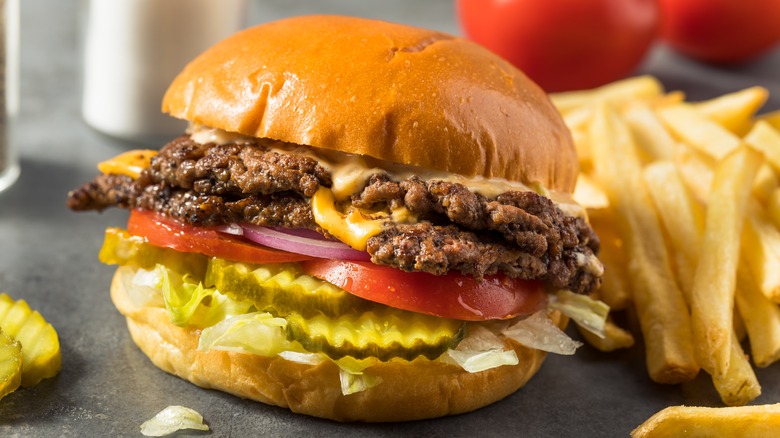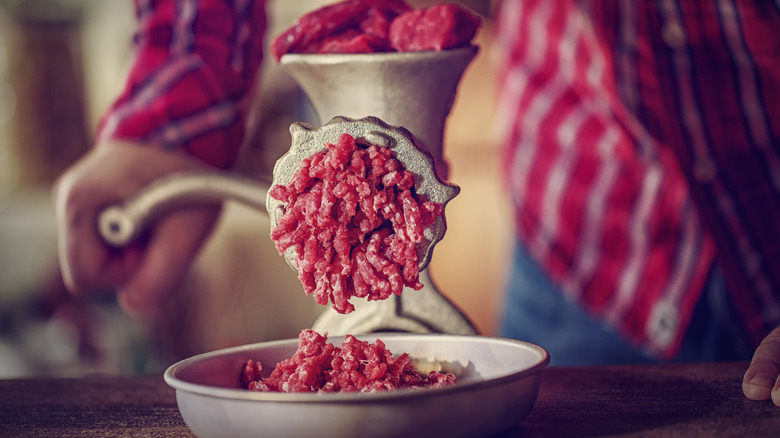Does Grinding Your Beef Really Make A Difference For Smash Burgers?
Burger sizes wax and wane. One moment, hulking, imposing, thick, juicy, medium-rare patties are de rigueur; the next, stacks of lacy-edge, ever-so-crunchy, caramelized thin patty smash burgers are hip. If you've been living under a rock for the better part of the past decade, we're currently in the latter age. Once it was considered gauche, even harmful to squeeze your meat, and now every chef with a griddle and wrist strength is pressing and spreading ground beef across the flat-top to get the all-important sear. But, how important is the grind on the beef if it's the "smash" that sells? And is this a situation where it pays to get your hands dirty? While the griddle's kiss may reign supreme, the grind on the beef bears consideration.
What's really in play here isn't the consistency of the beef or the taste of the meat itself — though those should be given thought — but rather a specific protein the beef contains. Myosin is one of the primary structural components of muscle fibers that aids in moisture and fat retention. It also helps hold the meat together, a factor of utmost importance when the burger at hand is getting smashed and smeared into the griddle. Commercial meat grinders grind meat a bit finer than can be achieved at home, a process that leaves more myosin in play and makes for a smash burger that holds up under pressure.
Getting the best beef
When shopping for beef for your smash burgers, you can use any commercially available ground meat you find. But, for really top-notch patties, you want to aim for beef that's on the fattier side for a much deeper richness and flavor. Most grocery stores max out at about 85% lean meat to 15% fat, which is a fine ratio, but if you can have the butcher grind the meat to order, ask for something closer to an 80:20 ratio of lean to fat.
If you can't find beef in such a recipe and it grinds your gears to use anything that is leaner, you can grind your own beef at home. Of course, this requires a meat grinder, which most people don't have these days. That said, there are many fine home versions available and even some that attach to other common kitchen tools, like Kitchenaid's beloved stand mixer. For your smash burger beef, grind the meat using the finest plate for maximum myosin exposure. Finally, if you don't have a meat grinder but simply must generate your own ground beef, a food processor can be used, but know that the consistency will be a bit uneven, which will have a pronounced effect on your final product.

